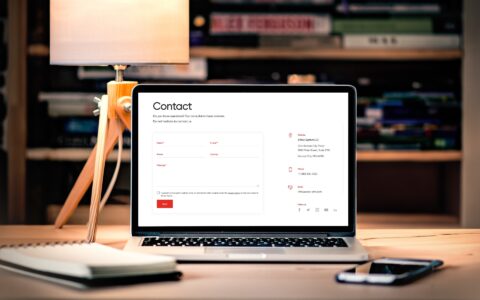
Thanks to the connection of a CRM with an accounting software, ERP and other systems, a number of processes can be automated. Each additional integration saves time and the company then works smoothly. However, integrations have always been time-consuming and costly to develop. Services such as Zapier have brought great simplification in this direction, thanks to which even an ordinary user can set up the integration.
In eWay-CRM, we introduced the possibility of integration with Zapier at the end of January. Therefore, we asked our sales director Jiri Tvorik to talk about the possibilities of this service and integration in general.
What integrations do clients ask for most often?
Clients most often look for integration with their existing corporate information system, ERP. These systems basically already contain a native CRM module but many clients say that its practical usability is relatively limited either due to the complexity of the environment, the absence of a mobile application, the impossibility of off-line operation on out-of-office devices, or due to lacking integration with Outlook.
Sales reps who manage the majority of daily operations through the basic functions of Outlook, such as contacts, e-mails, calendars, or tasks, often have to rewrite the selected information manually into the ERP. This is inconvenient and uneconomical.
As a result, business opportunities remain in a kind of systemic gray zone between Outlook, the Excel spreadsheet, the diary, and the sales rep's memory. In ERP, a new order appears suddenly after the deal is signed, but the clear and complete business genesis of the given case is missing. Therefore, we often promote eWay-CRM before ERP as a system for supporting and managing the business process – i.e. before entering information into the ERP system.
Integration is a key so that new contacts organically created in the sales team through a combination of Outlook and eWay-CRM do not have to be entered into the ERP manually, or vice versa, so that sales rep sees invoices invoices from the ERP in the CRM.
How often do new clients ask for integration?
Integration is one of the most common requirements for new CRM. However, the demands for customized integrations are less frequent. It does not make sense for us or the client to build customized data bridge. Whether for economic reasons or due to time constraints. That's why we have prepared a basic one-way synchronization from thousands of existing applications to eWay-CRM through Zapier where a client can easily open and do alone.
The latest Zapier integration is just one out of many. What are the others?
First of all, our free eWay-CRM API, including detailed technical documentation. The client can thus use their team or ousource an IT partner if they want to do the required integration alone. We can thus focus primarily on the development of eWay-CRM as such.
What is the advantage of Zapier and similar services over integration that you do "on your own"?
Absolute simplicity that does not require assistance of a developer. We have already invested them in the integration with Zapier. The client only clicks on what they need in the simple interface.
 Jiri Tvorik - eWay-CRM CSO
Jiri Tvorik - eWay-CRM CSO
The use of services that simplify integration also pays off for application developers. Do we have the capacity for that? What percentage of demands for custom development of integrations can we satisfy?
Instead of custom development, we try to invest the capacity of our development team primarily in the development of eWay-CRM as such, so that with each new version it brings the most wanted functions to all our clients.
Individual requests can be successfully solved in the previously mentioned API and the simpler ones in Zapier. In practice, for example, a project in which our client asked the supplier of economic software KELOC to integrate with eWay-CRM has recently been solved in this way, and the supplier has managed it perfectly with the eWay-CRM API without once asking our technical support or developers. That's exactly the way we imagined it would work.
Fot what types of integrations can be Zapier used, and when do developers need to be involved?
The current integration with Zapier is one-way into eWay-CRM. For integration with an ERP, where two-way directory synchronization is often required, it is no longer enough. There is our carefully documented eWay-CRM API available. However, according to the feedback from our clients, we can possibly take the integration with Zapier one step further.
Why have you selected Zapier out of all available services?
The reason is quite obvious. It is a popular integration platform for American clients, with support for many local applications, including economic software.











